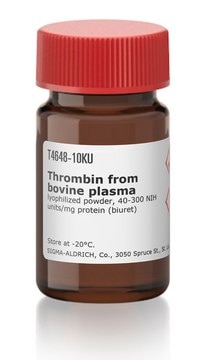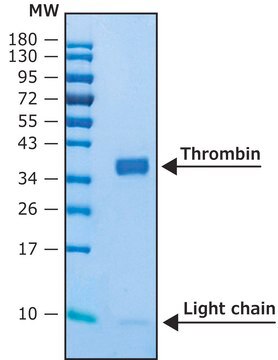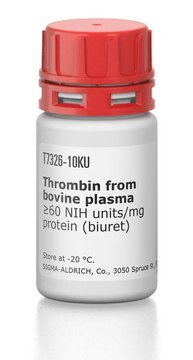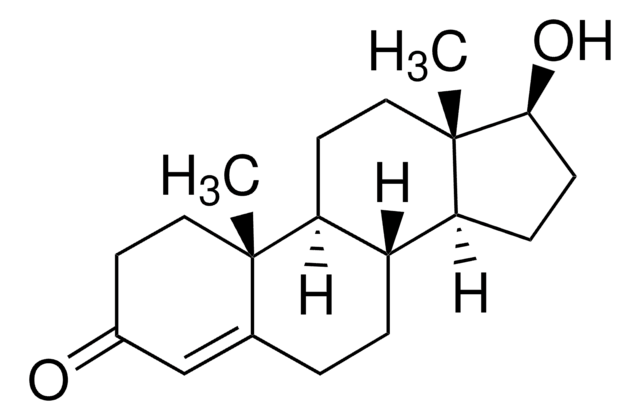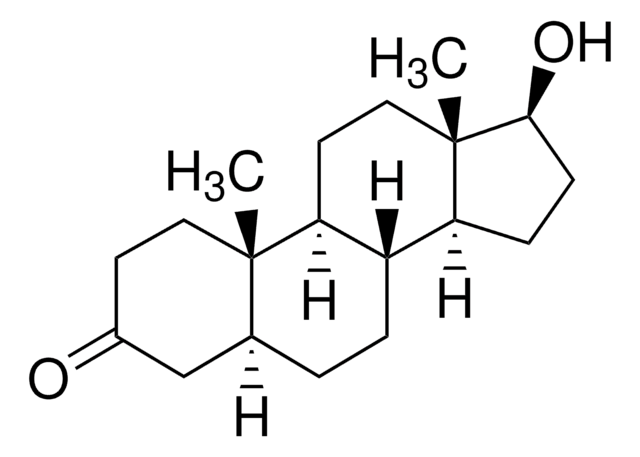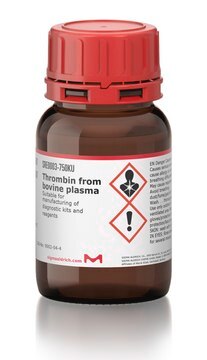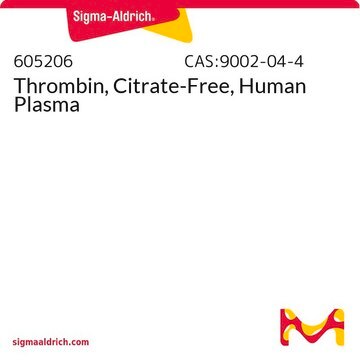T7009
Thrombin from human plasma
lyophilized powder, ≥1,000 NIH units/mg protein (E1%/280, 18.3)
Synonym(s):
Factor IIa
About This Item
Recommended Products
form
lyophilized powder
Quality Level
specific activity
≥1,000 NIH units/mg protein (E1%/280, 18.3)
mol wt
37.4 kDa
impurities
HIV and HBsAg, source material tested negative
UniProt accession no.
application(s)
diagnostic assay manufacturing
storage temp.
−20°C
Gene Information
human ... F2(2147)
Looking for similar products? Visit Product Comparison Guide
General description
Application
- dissolved in CaCl2 and added to poly ethylene glycolated fibrinogen/cell solution for fibrin production
- to polymerize fibrin on well plates
- used as an endogenous agonist proteinase for proteinase-activated receptors : PAR1, PAR3 and PAR4 for stimulation of cells
Biochem/physiol Actions
Unit Definition
Physical form
Analysis Note
Other Notes
Disclaimer
inhibitor
substrate
Signal Word
Danger
Hazard Statements
Precautionary Statements
Hazard Classifications
Resp. Sens. 1
Storage Class Code
10 - Combustible liquids
WGK
WGK 3
Flash Point(F)
Not applicable
Flash Point(C)
Not applicable
Certificates of Analysis (COA)
Search for Certificates of Analysis (COA) by entering the products Lot/Batch Number. Lot and Batch Numbers can be found on a product’s label following the words ‘Lot’ or ‘Batch’.
Already Own This Product?
Find documentation for the products that you have recently purchased in the Document Library.
Customers Also Viewed
Articles
Thrombin Factor IIa is an endolytic serine protease that selectively cleaves the Arg--Gly bonds of fibrinogen to form fibrin and release fibrinopeptides A and B.
Our team of scientists has experience in all areas of research including Life Science, Material Science, Chemical Synthesis, Chromatography, Analytical and many others.
Contact Technical Service
